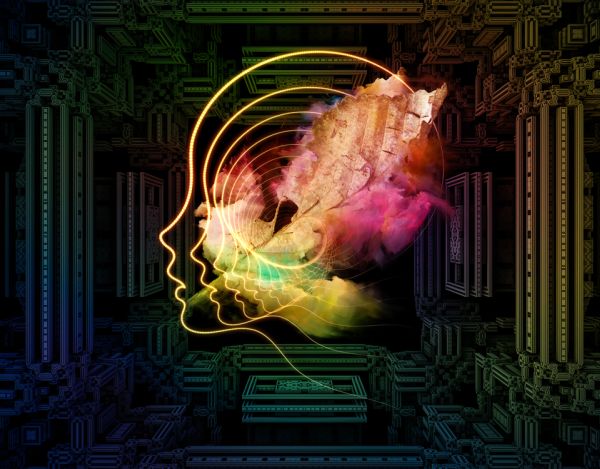Synergistic Values of Art and Health
M3 India Newsdesk Mar 22, 2017
Effective strategies for addressing physical and mental disorders require prevention and management approaches.

Mental health is influenced by social determinants and major physical illnesses such as obesity, cardiovascular diseases, diabetes while stress impacts hypertension. Hence, lifestyle interventions and arts-based techniques have a unique role to play in preventing and managing these conditions. Since ancient times art, or creative expressions, is known to promote and contribute to healing and well-being across cultures.
In the chapter titled Arts and health initiatives in India (Creative Arts, Health and Wellbeing edited by Stephen Clift and Paul M. Camic, 2015), the authors interviewed experts of various Indian classical and western art forms, who also had psychology or psychiatry qualifications, in order to explore the therapeutic potential of major art forms.
Experts Speak
Vedic literature, religions, and cultures are closely associated with artistic expression. Traditional Indian medicine defines health as a state of being established in oneself such that a healthy person is one who has a cheerful mind, contented senses, clarity of intellect, and balanced physiological functions and metabolism.
Major Indian art forms include music, dance, drama, yoga, and fine arts. We have mentioned below the highlights of Arts and health initiatives in India:
Art Form: Music
Indian classical music has vocal and instrumental elements with a tradition of community singing. Certain tunes, notes, and rhythms are reported to induce physiological changes in the body of the listener (via modified neurotransmitters and hormonal levels). Experts believe that ragas were traditionally formulated to promote health benefits for the practitioners and the audience.
Impact on Physical and Mental Health:
Traditional healing systems of Nadayoga and Ragachikitsa prescribe listening to specific ragas to treat insomnia, arthritis, anorexia, depression, and anxiety. Music therapy, with or without medical treatment, remedies psychological and physiological disorders of acidity, migraines, liver diseases, autism, asthma, stress, schizophrenia, and dementia. In the clinical setting, music therapy is a non-medical adjunct for pain management, reducing nausea during chemotherapy, and survival of cancer patients.
Art Form: Dance
Dance modifies behaviour by unifying and harmonising emotional, spiritual, intellectual, psychological, and creative energies. Basic elements of classical and folk Indian dance forms involve physical expressions such as gestures, postures, mood, language, and mental expressions which entertain and promote happiness. Dance serves as a natural method to express emotions of anger, love, terror, pity, and comedy.
Impact on Physical and Mental Health:
- Dance therapy promotes self-awareness and well-being.
- Dance classes for Parkinson’s disease patients foster balance control, reduced tremors, improved cardiovascular endurance, attention cues, increased confidence, and community involvement.
Art Form: Drama
Drama therapy emphasises creativity and spontaneity. Theatre exercises, storytelling, and role-play help people cope with real-life challenges by serving as an outlet for violence, frustration, and/or aggression.
Impact on Physical and Mental Health:
Drama therapy enhances listening, problem-solving abilities, physical fitness, and coordination.
It has been used to rehabilitate prisoners, autistic children, and tsunami survivors
Art Form: Yoga
The physical discipline of yoga, or Hatha yoga, employs defined set of physical poses (Asanas) to cultivate physical and psychological health synchronously.
Impact on Physical & Mental Health
- Yoga therapy is reported to have therapeutic value in the management of nervous, respiratory, musculoskeletal, immune, and cardiovascular disorders.
- Yoga therapy benefits patients with mood and anxiety disorders, post-traumatic stress disorder, and depression. Yogic concepts of Krushniyavida, Kalaripayyatu, and Kalarichikilsa are used to overcome personal fears, build self-confidence, and improve respiratory functions.
Art Form: Fine Arts
Creative expression via literature, music, and art improves self-awareness, personal growth, self-esteem, self-confidence, and concentration. Art therapy serves as a cathartic process to express and manage feelings and pain.
Impact On Physical & Mental Health
Fine arts education — painting, drawing, sketching, and colouring — has universal application in schools and special needs institutions because of its ability to affect balanced cognitive and emotional development.
The Indian health culture promotes the multi-pronged implementation of multiple medical systems, in a sequential or simultaneous manner, to address one or more ailments. Traditional art therapies should be cherished, cultivated, and practised to maximise their health benefits for the individual and society. The Arts and health initiatives in India chapter and remainder of the Creative Arts, Health and Wellbeing book provide an extensive account of different art forms and their therapeutic value.
-
Exclusive Write-ups & Webinars by KOLs
-
Daily Quiz by specialty
-
Paid Market Research Surveys
-
Case discussions, News & Journals' summaries